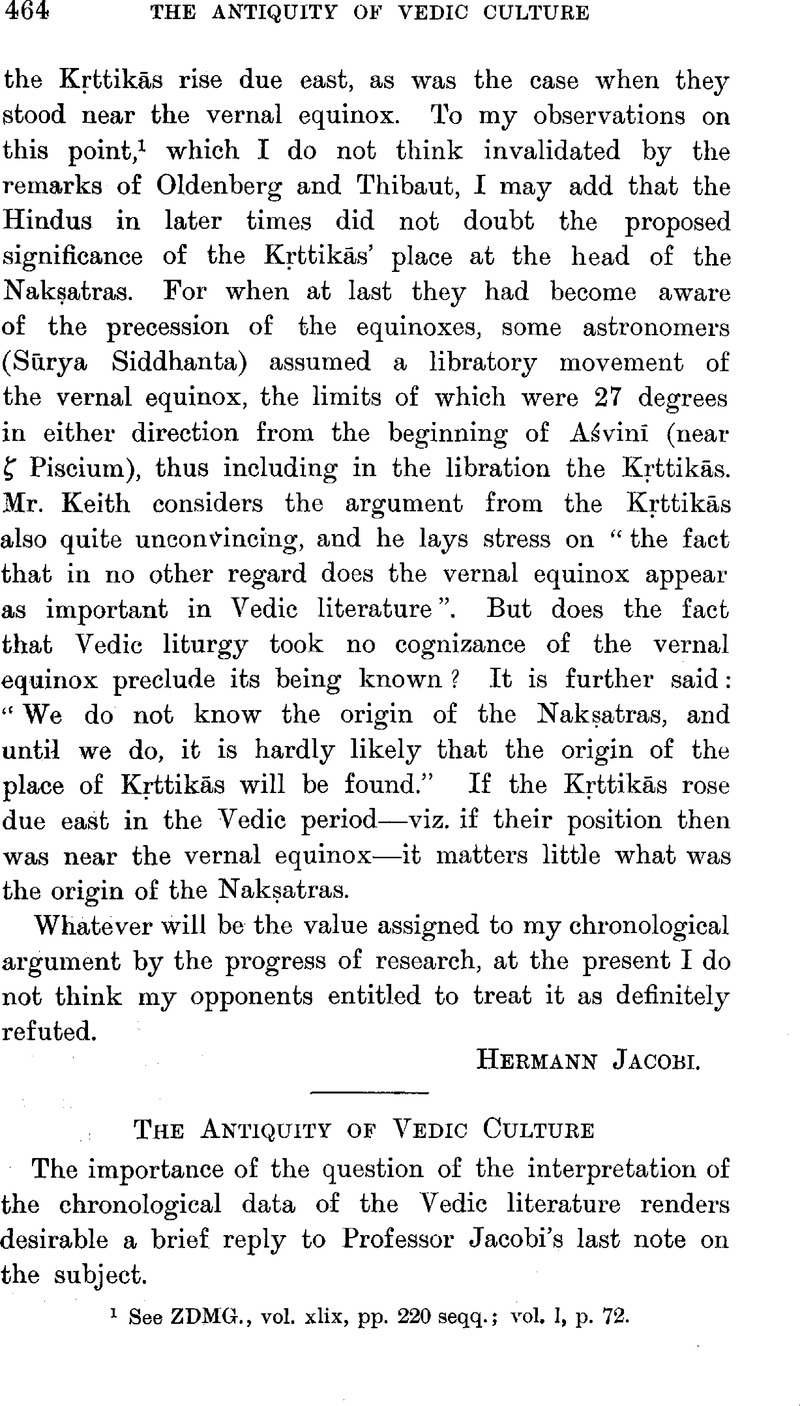No CrossRef data available.
Published online by Cambridge University Press: 15 March 2011

page 465 note 1 Cf. also Oldenberg, , ZDMG., 1, 450, 451Google Scholar.
page 466 note 1 JRAS., i, 316 seqq.; Colebrooke's, Essays, i, 126 seqq.Google Scholar; Oriental and Linguistic Studies, ii, 380 seqq.
page 466 note 2 Indiache Studien, x, 234 seqq.
page 466 note 3 IA., xxiv, 98 seqq.
page 466 note 4 IA., xxiii, 157, where he seems to admit a possible error of ten centuries in the fixing of the vernal equinox at Kṛttikās! It should be noted that both Whitney, (Studies, ii, 383)Google Scholar and Thibaut, (IA., xxiv, 97)Google Scholar are prepared to accept the view that the presence of Kṛttikās at the equinox is merely another form of the datum of the Jyotiṣa; this would reduce indefinitely the importance of the Kṛttikās theory.
page 466 note 5 Shamasastry's, effort (Gavām Ayana, pp. 132 seqqGoogle Scholar.) to refute Whitney must be regarded as quite inadequate. The references to Baudhāyana establish nothing that was not known before. Whitney was acquainted with the Brāhmaṇa references to the holding of certain festivals on certain dates, but he laid stress on the fact that there is no evidence to show how the Jyotiṣa and the sacrificial ritual were connected. It may be remarked that the evidence of the Jyotiṣa so far as it goes is very unfavourable to Shamasastry's theory of go as “intercalary day”.